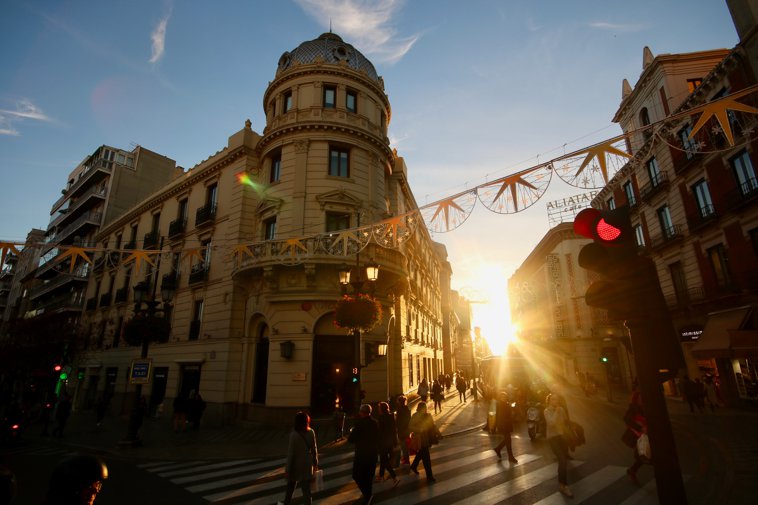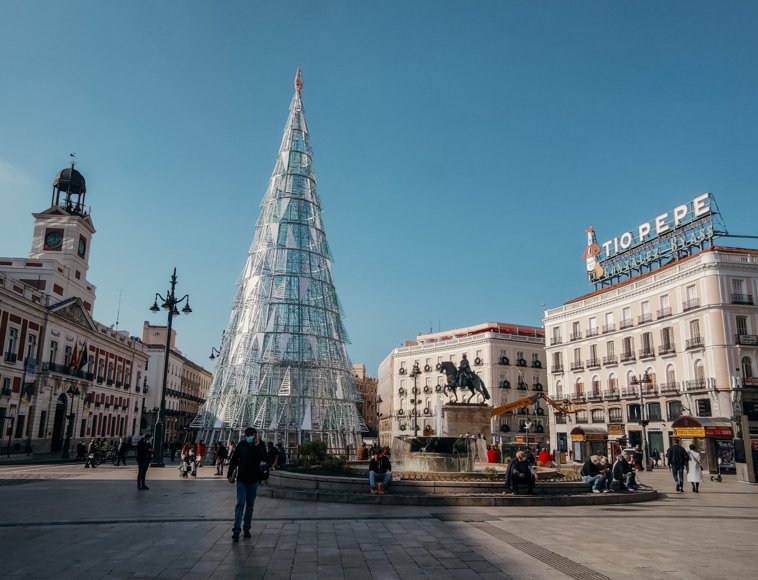Christmastime in Spain
Questions This Article Answers
How is Nochebuena celebrated in Spain?
How is Navidad celebrated in Spain?
What is El Gordo?
How is Nochevieja celebrated in Spain?
How is Año Nuevo celebrated in Spain?
Who are the Reyes Magos?
 Many Spanish families celebrate holidays on December 24, 25, and 31, as well as on January 1 and 6. Each of these dates usually is marked by a multi-course, intergenerational family meal at a family member’s house. For the uninitiated, this marathon of get-togethers and meals can be daunting. But it’s a special season, and and a great opportunity to gather with one’s family and friends and celebrar(to celebrate)!
Many Spanish families celebrate holidays on December 24, 25, and 31, as well as on January 1 and 6. Each of these dates usually is marked by a multi-course, intergenerational family meal at a family member’s house. For the uninitiated, this marathon of get-togethers and meals can be daunting. But it’s a special season, and and a great opportunity to gather with one’s family and friends and celebrar(to celebrate)!
Nochebuena in Spain
Nochebuena(Christmas Eve), celebrated in Spain on December 24, is the official start to the winter holiday season. In the evening—usually around 9 pm—families gather to eat the first meal of the holiday season.
Navidad in Spain
Navidad(Christmas Day), celebrated in Spain on December 25, is the second meal or celebration of the season. Families tend to have a comida(lunch) together around 3 pm. Lunch is often the previous night’s sobras(leftovers)

El Gordo
The drawing for El Gordo de Navidad, Spain’s annual Christmas lottery, takes place on December 22. Prizes range from the reintegro(cash back) prize of €20 up to the grand prize of around €600,000. If you head to a Spanish bar for a coffee on the morning of December 22, you’re almost certain to hear the niños de San Ildefonso(children from San Ildefonso school) singing the winning lottery numbers and prize amounts. They sing for hours, and the tune is muy pegadizo(a real earworm)!
What About the Gifts!?
While Papá Noel(Santa Claus) has been gaining ground in Spain, he’s not the traditional bearer of gifts. Children traditionally get their gifts from los Reyes Magos(the Magi) on Reyes(Epiphany), which is celebrated on January 6.
Christmas Gifts in Spain
Throughout Spain, there are various mythical wintertime bearers of gifts. Please note that these Christmas gift-bearers cross borders, and for that reason we used the term culture instead of region. For example, Basque families living in other regions might welcome Olentzero into their homes.
Nochevieja in Spain
Nochevieja, or New Year’s Eve, is celebrated in Spain on December 31. Yet again, families gather to feast in the late evening, starting around 10 or 11 pm. Families have dinner, and then watch the ball drop in Madridwhile they eat 12 uvas(grapes) as the bell chimes in the New Year.
Año Nuevo in Spain
Año Nuevo, or New Year’s Day, is celebrated in Spain on January 1. Families gather for another meal, often of leftovers from dinner the night before.
Reyes in Spain
Reyes is celebrated in Spain on January 6 and brings the Christmas season to an end. If you want the Reyes Magos to leave you something in Spain, be sure to leave a shoe out for them to fill! On Reyes, people eat roscón de Reyes(king cake), which is a cream-filled, bread-like pastry. It’s very similar to the king cake people eat in New Orleans around Mardi Gras.
Spanish Vocabulary for Christmastime
Let’s take a look at some of the most typical dishes that you’ll find on a Spanish table throughout the holiday season:
Feeling festive? Check out the following articles!














